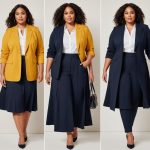Understanding Sustainable Fashion
Sustainable fashion is pivotal in addressing the current climate crisis, engineered to reduce environmental impact while promoting social responsibility. As traditional fashion fuels environmental degradation, sustainable practices emphasize eco-friendly clothing and the ethos of maintaining ecological balance. This includes utilizing sustainable materials, ethical labor practices, and minimizing waste.
Eco-conscious fashion adheres to principles such as reducing water and energy usage, opting for renewable resources, and prioritizing local production. Such practices contribute significantly to lessening the carbon footprint associated with textile production and waste.
Have you seen this : Elevate Your Summer Evenings: Trendy Tweed Jacket Styling Tips for Enchanting UK Countryside Adventures
The rise of ethical brands in the UK showcases an emerging commitment to environmentally friendly practices and ethical labor standards. Companies in this space aim for transparency in production processes, prioritizing biodegradable or upcycled materials, and ensuring fair working conditions. When evaluating these brands, look for third-party certifications like GOTS or Fair Trade, which authenticate their efforts towards genuine sustainability.
In essence, eco-friendly clothing and ethical brands pave a path for the fashion industry to evolve responsibly. By understanding and supporting these initiatives, consumers can play a vital role in promoting a sustainable and ethical future for fashion.
Also to see : Discover the Top Fabric Softeners in the UK: Elevate Your Luxurious Lace Wardrobe to New Heights
What is a Capsule Wardrobe?
A capsule wardrobe is a collection of timeless, versatile clothing pieces that reflect minimalism while fostering sustainability. By reducing clothing consumption, this approach minimizes waste and promotes eco-friendly clothing choices. Adopting a capsule wardrobe supports sustainable fashion by encouraging individuals to prioritize quality over quantity.
The primary benefit of a minimalist fashion approach lies in its ability to streamline personal style, making daily dressing decisions simpler. By focusing on a specified number of garments, individuals cultivate a personal style that is both sustainable and adaptable. This discipline helps reduce the carbon footprint associated with excessive fashion consumption.
Incorporating a capsule wardrobe contributes to a sustainable lifestyle because it emphasizes versatile clothing that can be styled in various ways. This encourages creativity within constraints and reduces the dependence on fast fashion trends. For example, a well-chosen blazer or classic jeans can transition from casual to professional settings seamlessly, maximizing their usage.
Ultimately, embracing the concept of a capsule wardrobe empowers individuals to be more mindful of their fashion choices. It reflects a commitment to the environment and enhances personal style simplicity. Through thoughtful clothing selection, one can cultivate a curated wardrobe that is both stylish and eco-conscious.
Key Pieces for a Sustainable Capsule Wardrobe
Building a capsule wardrobe is a practical step towards embracing sustainability through careful selection of essential wardrobe pieces. This approach advocates for timeless fashion that is both functional and stylish.
Tops
Tops serve as a foundation in any capsule wardrobe. Opt for versatile styles that can be dressed up or down, such as classic shirts or simple turtlenecks. Choosing sustainable materials like organic cotton or bamboo not only benefits the environment but also provides comfort and durability. Timeless tops can easily adapt to different occasions, making them indispensable staples.
Bottoms
When it comes to bottoms, sustainable materials like recycled polyester and Tencel offer eco-friendly choices. Opt for styles that allow mixing and matching, such as dark denim jeans or neutral skirts. The key is to balance comfort and fit, ensuring these pieces are adaptable across various settings and enhance the wardrobe’s overall versatility.
Dresses and Outerwear
Dresses act as a versatile component in a capsule wardrobe, seamlessly transitioning from daytime to evening. Selecting outerwear that is both stylish and eco-conscious involves focusing on pieces like trench coats or denim jackets, which offer layering options. Prioritizing materials like wool or recycled fibres ensures both sustainability and style.
Eco-Friendly Brands and Retailers
Navigating the UK’s eco-fashion landscape has become more accessible with the emergence of sustainable brands committed to lessening the fashion industry’s environmental impact. These brands focus on eco-friendly clothing while embedding ethical practices into their frameworks. Supporting such brands is a step towards endorsing fashion that respects the environment and ethical standards.
When choosing ethical fashion retailers, several criteria should be kept in mind. Transparency in production processes stands paramount; brands that openly share information about their supply chain practices foster consumer trust. Certifications like Fair Trade and GOTS can serve as reliable indicators of genuine commitment to sustainable practices.
Several UK-based brands lead the charge in ethical fashion. These companies prioritise biodegradable materials and responsible production methods. Engaging with these brands promotes a shift towards more sustainable consumption patterns, encouraging the broader industry to adopt these practices.
The presence of sustainable brands pushes the fashion industry towards a future where eco-fashion is the norm, not the exception. Consumers can significantly drive change by selecting retailers mindful of their ecological impact, contributing implicitly to the collective effort against the climate crisis.
Outfit Combinations and Styling Tips
Capsule outfit ideas transform a minimalist capsule wardrobe into a multitude of expressive styles. Crafting these looks begins with understanding how to creatively mix and match essential pieces to maximize your wardrobe’s potential. Start by pairing versatile tops like classic shirts or turtlenecks with adaptable bottoms such as dark denim jeans or neutral skirts. This allows seamless transitions from casual daytime wear to chic evening styles.
Styling tips emphasize the power of layering and strategic accessorizing. Introduce accessories like scarves or statement jewellery to refresh looks without adding unnecessary garments. Layering is particularly effective; a well-chosen blazer can elevate a simple outfit, adding sophistication and warmth—perfect for adapting to seasonal variations.
To incorporate seasonal trends while keeping the sustainable ethos intact, focus on colours or accessories inspired by current fashion without compromising sustainability. This can be achieved through buying second-hand or vintage items that align with these trends.
Finally, ensure each piece aligns with sustainable principles. Opt for timeless fashion over transient trends, prioritizing quality and longevity in each choice. This approach not only minimizes waste but also celebrates personal style thoughtfully and sustainably.
The Impact of Sustainable Fashion
The impact of sustainable fashion on the environment cannot be overstated, as highlighted by numerous fashion industry statistics. Traditional fast fashion is known for its detrimental effects, including significant carbon emissions and excessive water usage. By choosing eco-conscious choices, individuals contribute to reducing this environmental footprint.
Benefits of sustainable clothing extend beyond environmental preservation. On an individual level, investing in quality pieces promotes durability and long-term use, decreasing the need for frequent replacements and reducing waste. Collectively, this shift toward sustainability encourages brands to adapt to consumer demand for responsible practices, fostering a broader industry-wide change.
Mindful consumption has a profound influence on the fashion industry. With consumers increasingly prioritizing eco-friendly options, brands are pressured to embrace transparency in their supply chains and adopt sustainable methods. This movement supports a cycle where ethical and sustainable practices become standard, further enhancing the impact of sustainable fashion.
Statistics about the environmental burden of fast fashion serve as a wake-up call, emphasizing the need for industry reform. By transitioning to eco-conscious choices, both individuals and businesses can propel the fashion industry toward a more sustainable future, preserving the planet for generations to come.
Resources for Further Learning
Exploring sustainable fashion resources can deepen your understanding and inspire more eco-conscious choices. A wealth of education on eco-fashion exists in various formats, fostering informed decision-making.
Recommended Books and Documentaries
Books such as “Fashionopolis” by Dana Thomas and “The Conscious Closet” by Elizabeth L. Cline offer comprehensive insights into the impact of the fashion industry and guide sustainable practices. Documentaries like “The True Cost” provide eye-opening perspectives on the environmental and human costs of fast fashion.
Online Platforms and Communities
Joining online communities such as the Eco-Fashion Forum or Good On You app can connect you with like-minded individuals and keep you updated with the latest in eco-fashion. These platforms offer reviews of ethical brands and practical tips for sustainable living.
Websites and Organizations
Websites like the Sustainable Apparel Coalition and the Fashion Revolution are dedicated to promoting ethical practices in fashion. They offer valuable resources, including guides and articles that support transitioning towards eco-conscious fashion choices. Engaging with such organizations plays a critical role in advancing the global sustainable fashion movement.











